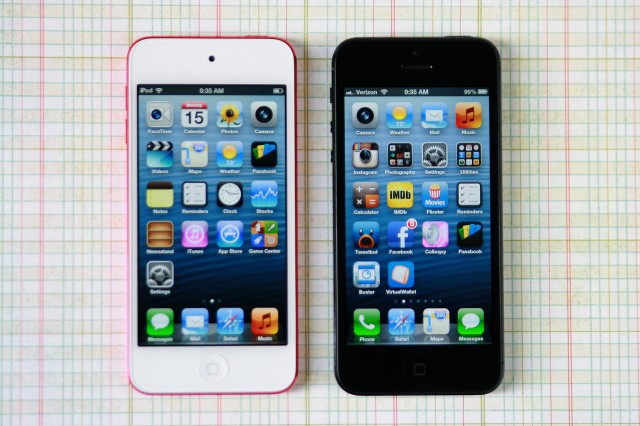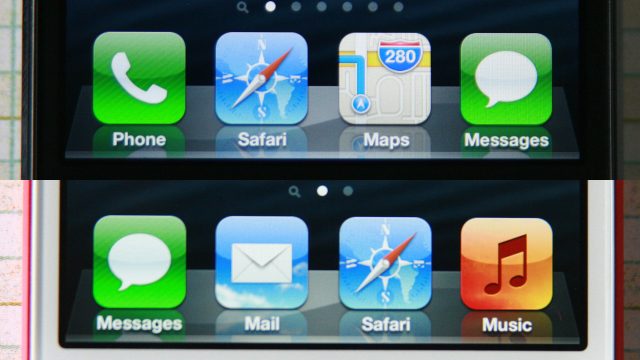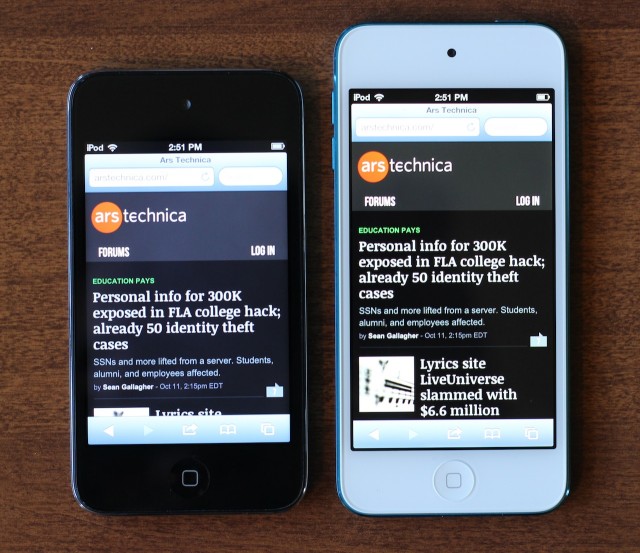
Much has changed since the last time Apple updated the iPod touch. Smartphones have become cheaper and more popular, and free-with-contract models are now available from most manufacturers. Android tablets (and e-readers turned tablets) have been introduced and then reduced in price to the same $200-and-up market the iPod touch caters to. Windows 8 is imminent, and it's bringing a host of new touch-enabled devices with it.
Few devices aim for the iPod touch's niche—those people who want the features and approximate size of a smartphone without the added cost of a data plan. Android-based alternatives like the Samsung Galaxy Player and the Sony Walkman F exist, but they haven't had the same impact as the touch. Most other companies don't seem interested in fighting Apple for the remains of the dwindling music player market.
So what does the new touch do to justify its existence in the face of omnipresent, ever-cheaper, ever-more-capable smartphones and tablets? Plenty—but it comes at a cost.
The screen


iPod touches have become less like iPhones as time goes on. The fifth-generation iPod touch is a monster, a jumble of mixed-and-matched parts from across the iPhone and iPod line: it has the same tall 4-inch screen and wireless capabilities of the iPhone 5, the A5 processor of the iPhone 4S, the colors of the iPod nano, and camera hardware most similar to that found in the latest iPad.
The new screen is a standout. The one in the fourth-generation iPod touch used the same resolution as the then-new iPhone 4, but the actual display panel had a lower contrast ratio and comparatively washed-out colors, a move obviously made to cut costs. Thankfully, the new iPod touch's 1136x640 screen has the same impressive contrast ratio and color as the iPhone 5's, and the older iPod touch (and the iPhone 4 and 4S, for that matter) pales in comparison.


Since the new iPod touch has the same tall screen as the iPhone 5, it can accommodate a fifth row of application icons on its home screen, and applications that haven't been updated to take advantage of the screen's newfound height are letterboxed, just as they are on the iPhone 5.
Thankfully, now that we're a few weeks past the iPhone 5's introduction, many major application developers have already gotten on board and issued iOS 6 and iPhone 5-compatible applications, meaning that most can take advantage of the extra space. Plenty of not-all-that-obscure applications haven't been changed yet, but the situation should be better for early iPod touch adopters than it was for early iPhone 5 adopters.
reader comments
146